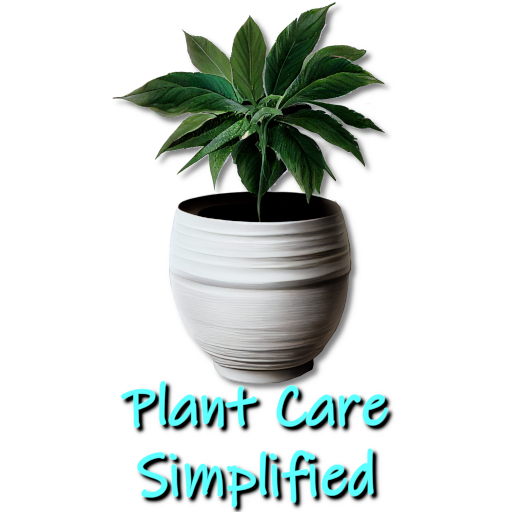Black Pagoda Lipstick Plant: The Ultimate Guide
Kim is passionate about helping people create beautiful, healthy indoor spaces that are filled with plants. Kim believes that plants make us happier, healthier human...
- Description of the Black Pagoda Lipstick Plant: The Black Pagoda Lipstick Plant, scientifically known as Aeschynanthus longicaulis (synonym Aeschynanthus marmoratus), is a visually stunning houseplant native to Southeast Asia. It features dark green variegated leaves with distinctive markings resembling pagodas, and its striking tube-like orange-red flowers, which resemble lipstick tubes, give it its common name.
- Plant Care Requirements: The article provides detailed guidance on caring for the Black Pagoda Lipstick Plant, including light requirements, temperature and humidity preferences, watering and soil moisture tips, fertilization needs, air circulation and ventilation importance, and potting and repotting instructions.
- Propagation Methods: The Black Pagoda Lipstick Plant can be propagated through stem cuttings, division, or in water, and the article offers step-by-step instructions for each method.
- Common Pests and Diseases: The article identifies common pests (e.g., aphids, mealybugs, spider mites, and scale insects) and diseases (e.g., leaf spot and powdery mildew) that can affect the plant, along with prevention and control measures.
If you are looking for a unique and eye-catching houseplant, you might want to consider the visually stunning Black Pagoda Lipstick plant, also known as the Zebra Basket Vine. One of many varieties of lipstick plants, the Black Pagoda offers a particularly stunning contrast between its leaves and flowers when in bloom making this a real centerpiece for a home.
More properly called, Aeschynanthus longicaulis (synonym Aeschynanthus marmoratus), the plant is a trailing vine with dark green variegated leaves that have distinctive markings. The leaves resemble the shape of a pagoda, hence the name. But the most striking feature of this plant is its flowers. They are tube-like and vibrant orange-red, emerging from a burgundy bud. They look like lipstick tubes, giving the plant its common name.
The Black Pagoda Lipstick Plant is native to Southeast Asia, where it grows in humid and shady forests. It belongs to the Gesneriaceae family, which includes other popular houseplants such as African Violets and Gloxinias. The Black Pagoda Lipstick Plant is an epiphyte, meaning it grows on other plants or trees without harming them. In nature, it uses its roots to attach itself to branches and rocks.
Black Pagoda Lipstick Plant Flower
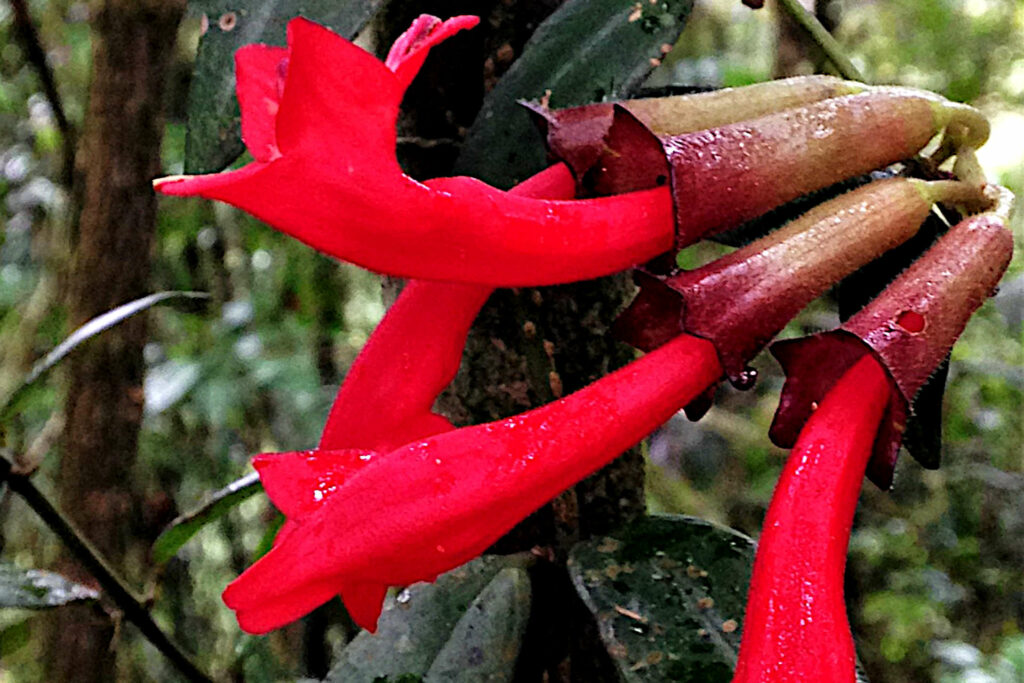
One of the most attractive aspects of the Black Pagoda Lipstick Plant is its flower. The Black Pagoda Lipstick Plant gets its name from the striking contrast between its dark green leaves with variegated pattern and its bright orange-red flowers that emerge from burgundy buds. The flowers look like lipstick tubes, hence the common name of lipstick plant. The contrast between the dark bud and the bright flower is striking and adds a splash of color to any room.
Hummingbirds and butterflies pollinate the flowers in their natural habitat, but they can be hand-pollinated indoors with a small brush or cotton swab. The flowers are not fragrant, but they add a splash of color and contrast to the dark foliage.
Encouraging Blooming
The Black Pagoda Lipstick plant's blooming season usually occurs in late winter and spring, but it can also bloom sporadically throughout the year if given enough light and humidity. To encourage your Lipstick plant to flower, you should give your plant medium to bright indirect light, preferably with the morning sun. You should also water your plant regularly, but let the soil dry out between waterings. Avoid overwatering or underwatering, as both can cause stress and prevent blooming.
Another factor that affects flowering is pruning. You should prune your plant after it blooms, removing dead or damaged stems and leaves. Pruning will help your plant maintain its shape and health and stimulate new growth and buds for the next season. You can also pinch back the tips of new stems to promote branching and more flowers.
To make your plant even happier, you can feed it with a balanced houseplant fertilizer once a month during spring and summer or use a diluted fish emulsion fertilizer every time you water. This will give your plant essential nutrients and boost its growth and flowering potential.
Distinctive Foliage
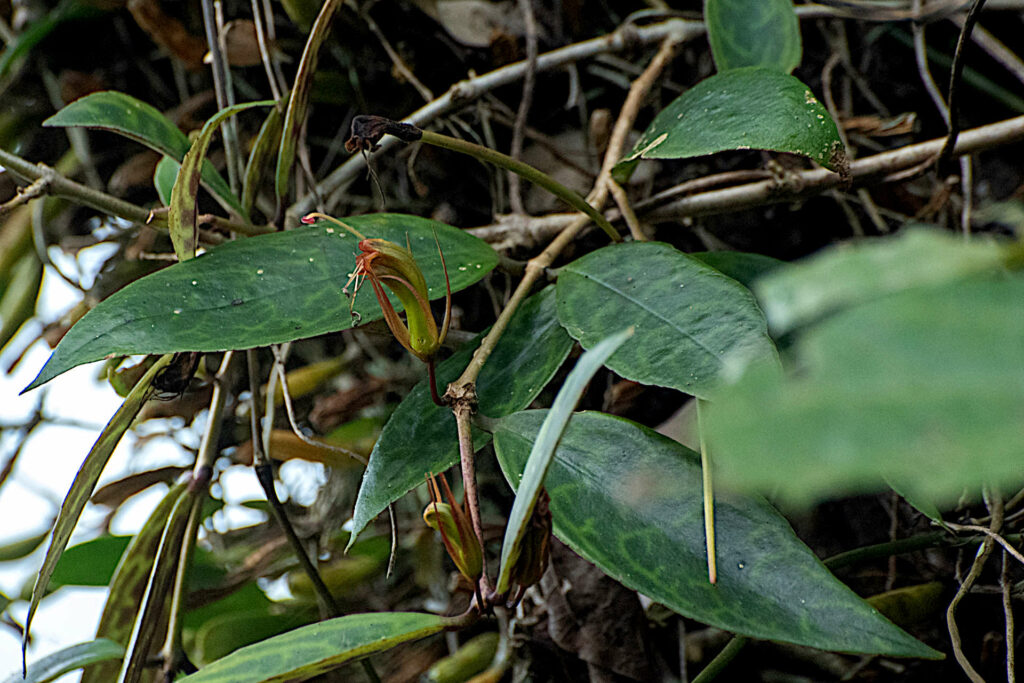
The foliage of the Black Pagoda Lipstick Plant is arguably more attractive than the flowers. The leaves are glossy, lance-shaped, and combine solid dark green light green contrast (occasionally creamy white/silver) variegation on the tops. The undersides of the leaves are either solid pale green, maroon, or purple, depending on the light exposure.
The leaves are arranged in pairs along the stems, which can trail, climb, or overhang. The stems can grow up to 3.3 ft (1 m) long, making this plant ideal for hanging baskets or tall containers. The stems are also attractive, changing from light green and flexible when young to brownish and woody when old.
Growing Conditions
The Black Pagoda Lipstick Plant is not very difficult to grow indoors, as long as you provide it with the right conditions. It prefers bright but indirect light, well-draining soil, moderate water, warm temperatures, and high humidity. It also benefits from regular fertilization during the growing season. With proper care of your Lipstick Plant, you can enjoy its beautiful flowers for several months.
Below, we will consider the following aspects of Black Pagoda Lipstick Plant care:
- Light Requirements
- Temperature and Humidity
- Watering and Soil Moisture
- Fertilization and Nutrient Requirements
- Air Circulation and Ventilation
- Potting and Repotting
Light Requirements
In terms of the light needs of a Lipstick plant, the Black Pagoda needs a medium to bright indirect light to grow well and to bloom. It can tolerate some direct morning light but avoid exposing it to harsh afternoon sun, which can scorch its leaves. A south-facing or east-facing window is ideal for this plant. You can also use artificial lights, such as fluorescent or LED lamps, to supplement the natural light.
| Light Condition | Indicators |
|---|---|
| Insufficient Light | - Pale or yellowing leaves |
| - Leggy or sparse growth | |
| - Lack of flowering | |
| Excessive Light | - Brown or crispy leaf edges |
| - Faded or bleached leaf color | |
| - Drooping or wilting leaves |
Choosing the right location for indoor placement is crucial for your Black Pagoda Lipstick Plant's health and appearance. You want to provide it with enough light to promote its growth and flowering but not so much that it causes stress or damage.
Temperature and Humidity
The Black Pagoda Lipstick Plant prefers a comfortable interior temperature of 60 to 85 degrees F (16 to 29 degrees C). It can tolerate short periods of lower or higher temperatures but avoid exposing it to extreme cold or heat, which can harm its growth and health.
Some effects of temperature extremes are:
- Leaf drop or curling
- Stunted or distorted growth
- Reduced flowering or bud drop
The Black Pagoda Lipstick Plant also likes high humidity levels, as it is used to the moist air of its native habitat. You can maintain suitable humidity levels for optimal growth by:
- Misting the plant regularly with a spray bottle
- Placing the plant on a tray of LECA pebbles and water
- Using a humidifier or a vaporizer near the plant
- Grouping the plant with other humidity-loving plants
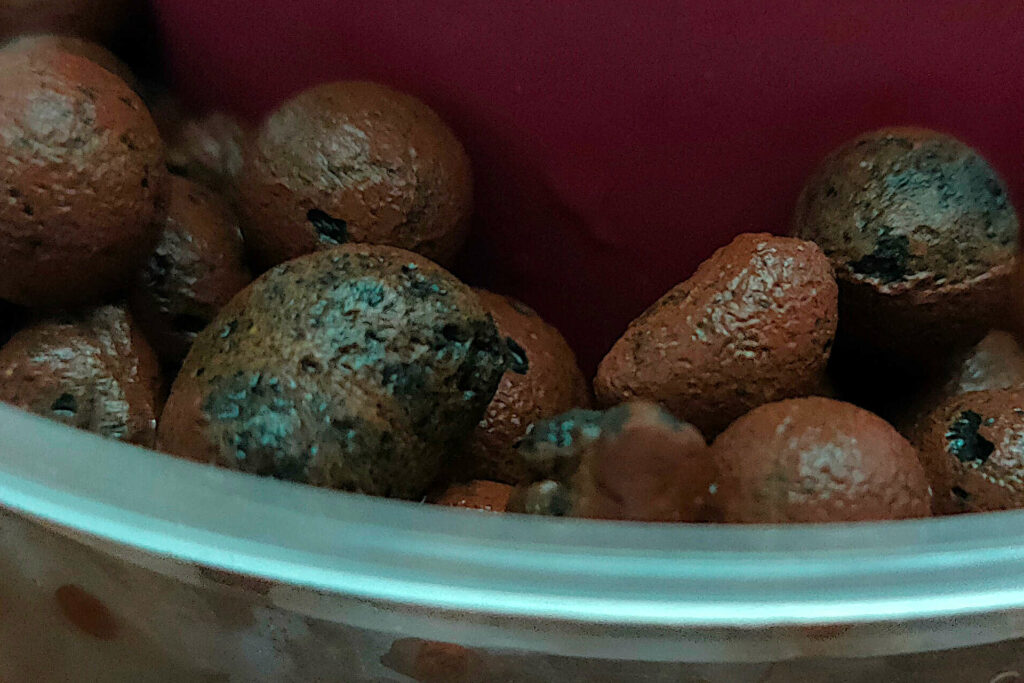
Some strategies for adjusting temperature and humidity are:
- Moving the plant away from sources of heat or cold, such as radiators, air conditioners, fireplaces, or drafty windows
- Covering the plant with a clear plastic bag or a cloche to create a mini greenhouse effect
- Increasing or decreasing the frequency of watering according to the season and the ambient conditions
Watering and Soil Moisture
The Black Pagoda Lipstick Plant needs regular watering to keep its soil moist but not soggy. You should water it when the top few inches of soil are dry, which may vary depending on the season, the pot size, and the light level. You can check the soil moisture by inserting your finger into the soil or using a moisture meter.
Some watering methods you can use are:
- Top-watering: Pour water slowly over the soil until it drains out of the bottom holes of the pot. Make sure to empty the saucer after watering to prevent root rot.
- Bottom-watering: Place the pot in a container of water and let it soak up water through the drainage holes for about 15 minutes. Remove the pot from the water and let it drain completely before putting it back in its place.
- Wick-watering: Insert one end of a cotton string into the soil and place the other end in a reservoir of water. The string will act as a wick and deliver water to the plant as needed.
Some signs of overwatering are:
- Yellow or brown leaves
- Mushy or rotten stems or roots
- Fungus gnats or other pests
Some signs of underwatering are:
- Dry or crispy leaves
- Drooping or wilting stems or leaves
- No flowering or bud drop
The Black Pagoda Lipstick Plant needs well-draining, chunky soil to prevent waterlogging and root rot. You can use a commercial potting mix designed for epiphytic plants, such as an orchid mix, cactus mix, or African violet mix. You can also make your own potting mix by combining equal parts of peat moss, perlite, and bark chips.
Some techniques for testing soil moisture and adjusting watering practices are:
- Using your finger: If you feel moisture up to your second knuckle, the soil is moist enough. If you feel it is dry, the soil needs water.
- Using a moisture meter: Insert the probe into the soil and read the scale. The soil is moist enough if the reading is in the green zone. If the reading is in the red zone, the soil needs water.
- Using a wooden chopstick: Insert the chopstick into the soil and pull it out. The soil is moist enough if the chopstick is wet or has soil stuck to it. If the chopstick is dry or clean, the soil needs water.
Fertilization and Nutrient Requirements
The Black Pagoda Lipstick Plant needs essential nutrients to support its growth and flowering. You can provide these nutrients by applying the right fertilizer to your Lipstick plant, usually a balanced houseplant fertilizer, every month during spring and summer when the plant is actively growing. You can also use a diluted fish emulsion fertilizer every time you water during the same period.
Some signs of nutrient deficiencies are:
- Pale or yellowing leaves
- Slow or weak growth
- Small or deformed flowers
Some signs of nutrient excesses are:
- Brown or black leaf tips or edges
- Leaf drop or curling
- Salt buildup on the soil surface or the pot rim
To select the right fertilizer and application for your Black Pagoda Lipstick Plant, you should:
- Follow the instructions on the fertilizer label and adjust the dosage according to your plant's size and condition
- Use a liquid or soluble fertilizer that the plant's roots can easily absorb.
- Apply the fertilizer to moist soil to avoid burning the roots.
- Flush the soil with water every few months to leach out any excess salts or minerals.
To develop a fertilization schedule for indoor cultivation, you should:
- Start fertilizing in early spring when you see new growth emerging.
- Stop fertilizing in late summer or early fall when the plant's growth slows down.
- Resume fertilizing in late winter or early spring when the plant starts to bloom.
Air Circulation and Ventilation
The Black Pagoda Lipstick Plant thrives in a well-ventilated environment where the air is fresh and moving. Proper air circulation helps the plant breathe, absorb nutrients, and prevent diseases. It also enhances the growth and flowering of the plant, making it more vibrant and attractive.
However, stagnant air can cause many problems for the Black Pagoda Lipstick Plant. It can create a humid and warm atmosphere, which encourages fungal infections, pests, and root rot. It can also reduce the oxygen levels in the soil, which affects the plant's health and metabolism. Therefore, it is essential to avoid placing the plant in a corner, near a wall, or behind furniture where the airflow is restricted.
To provide adequate ventilation for the Black Pagoda Lipstick Plant, you can use fans or open windows to create a gentle breeze around the plant. This will help refresh the air and remove any excess moisture or heat. However, you should not expose the plant to strong winds or drafts, as they can damage the leaves and flowers. You should also monitor the humidity levels in your indoor space, as too much or too little moisture can harm the plant.
Potting and Repotting
The Black Pagoda Lipstick Plant, as a trailing plant, grows best in hanging baskets or pots with drainage holes. The pot size and type can affect the plant's growth and health, so you should choose them carefully. Generally, you should select a pot that is slightly larger than the root ball of the plant and made of a porous material like terracotta or clay. This will allow the roots to breathe and prevent waterlogging.
The potting mix for the Black Pagoda Lipstick Plant should be light, airy, and well-draining. You can use a commercial potting mix for epiphytic plants or make your own by combining peat moss, perlite, vermiculite, and orchid bark. The potting mix should retain some moisture but not become soggy or compacted.
The Black Pagoda Lipstick Plant does not need frequent repotting, as it likes to be slightly root-bound. However, you may need to repot your Lipstick plant every two to three years or when you notice signs of root congestion, such as roots growing out of the drainage holes, reduced growth or flowering, or difficulty watering. To repot your Lipstick plant, you should carefully remove it from the old pot, trim any dead or damaged roots, and place it in a new pot with fresh potting mix. You should water the plant well after repotting and avoid fertilizing for a few weeks.
Propagating Your Black Pagoda Lipstick Plant
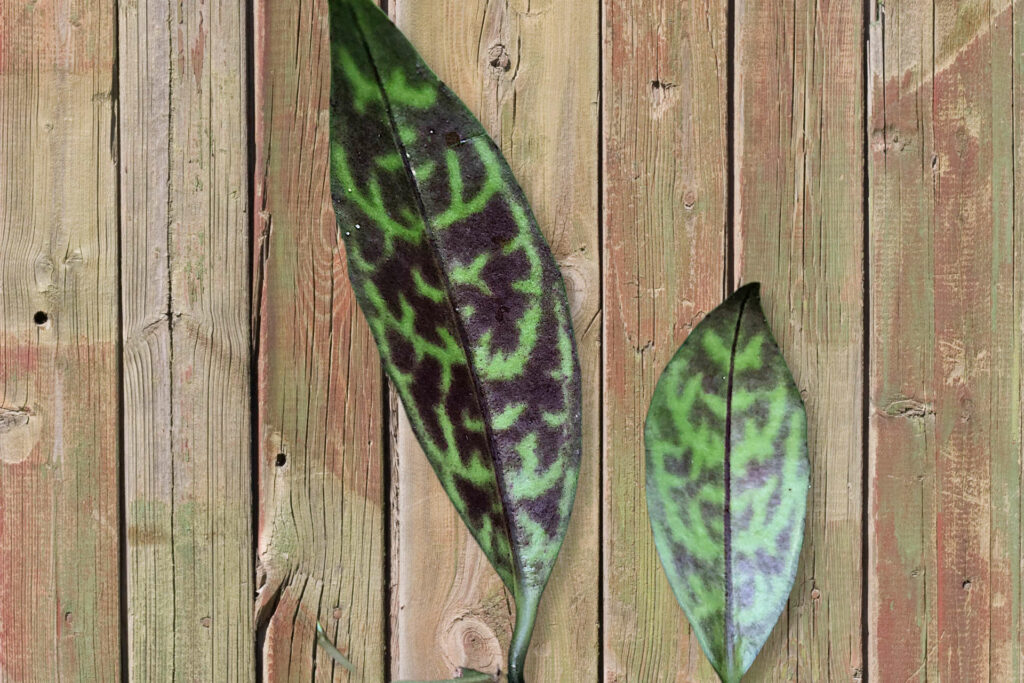
The Black Pagoda Lipstick Plant can be propagated by stem cuttings, division, or water. All three methods are relatively easy and effective.
Propagating Using Cuttings
You can take stem cuttings when the plant is actively growing in spring or summer. You should only choose healthy stems that have at least two or three nodes (the points where leaves emerge). You can remove the lower leaves and dip the cut end in the rooting hormone if you wish. Then you can insert the cutting in moist soil or water.
Propagating Through Division
If you choose to propagate the Black Pagoda Lipstick Plant by division, you need to wait until the plant is large enough to be separated into smaller sections.
When you repot the plant, you can do this in spring or summer. You should carefully remove the plant from its pot and gently pull apart the root ball into two or more pieces. Each piece should have some roots and stems attached. You can then replant each section in a new pot with fresh soil.
Propagating In Water
If you choose to propagate the Black Pagoda Lipstick Plant in water, you need to change the water every few days and keep it in a bright spot. You should see roots forming in a few weeks. Once the roots are about an inch (2.5 cm) long, you can transplant the cutting into a pot with fresh soil.
You can read a more in-depth guide to propagating Lipstick plants.
Common Pests Affecting Black Pagoda Lipstick Plant
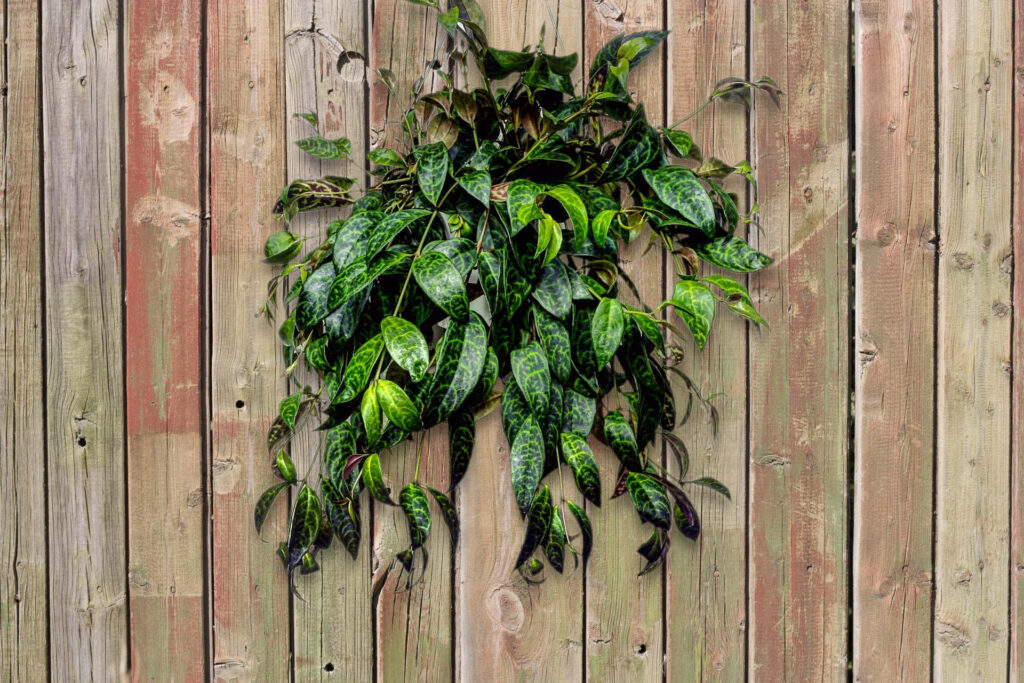
The Black Pagoda lipstick plant is a beautiful houseplant with striking foliage and flowers. However, like any other plant, pests can attack it, damaging its health and appearance. Here are some of the most common pests that affect the Black Pagoda lipstick plant
| Pest | Description and Identification | Signs of Infestation | Damage Caused | Prevention and Control Measures |
|---|---|---|---|---|
| Aphids | Small, soft-bodied insects in various colors | Curling, yellowing, or wilting of leaves | Reduces vigor and growth, transmits viral diseases | Inspect and remove infested parts. Use insecticidal soap |
| Mealybugs | Oval-shaped insects covered with white, waxy coating | Inspect and remove infested parts. Use insecticidal soap | Weakens health, transmits viral diseases, reduces aesthetic value | Inspect and remove infested parts. Use insecticidal soap |
| Spider Mites | Tiny arachnids, barely visible, spin fine webs | Fine webs on leaves or stems, yellowing or stippling of leaves | Reduces photosynthesis, causes leaf loss, transmits viral diseases | Inspect and remove infested parts, increase humidity |
| Scale Insects | Oval-shaped insects covered with a hard protective shell | Brown, gray, or white bumps on leaves, stems, or fruits | Weakens health, transmits viral diseases, reduces aesthetic value | Inspect and remove infested parts, use insecticidal soap |
Common Diseases Affecting Black Pagoda Lipstick Plant
Although a stunning houseplant, the Black Pagoda Lipstick Plant, like any other plant, can suffer from some diseases that can affect its health and appearance. Below are some of the most common diseases that can affect your Black Pagoda Lipstick Plant and how to prevent and treat them.
| Disease | Description and Identification | Signs of Infection | Damage Caused | Prevention and Control Measures |
|---|---|---|---|---|
| Leaf Spot | Fungal disease causing brown or black spots on leaves | Small spots on leaves, yellowing, wilting, leaf drop | Reduced photosynthesis and growth, plant death | Avoid overhead watering, good air circulation, remove infected leaves, fungicide spray |
| Powdery Mildew | Fungal disease causing white or gray powdery coating | White or gray patches on leaves, curling, distorted leaves | Reduced photosynthesis and growth, weakened plant | Good air circulation, avoid high humidity, remove infected leaves, fungicide spray |
| Root Rot | Bacterial or fungal disease causing root decay | Wilting, yellowing leaves, stunted growth, root discoloration | Reduced water and nutrient uptake, plant death | Well-draining potting mix, proper watering, repotting with fresh mix |
| Botrytis Blight | Fungal disease causing brown or black flowers and buds | Spots on flowers/buds, fuzzy gray mold, shriveling | Reduced flowering, weakened plant, spread to leaves/stems | Good air circulation, avoid high humidity, remove infected flowers/buds, fungicide spray |
Buying a Black Pagoda Lipstick Plant
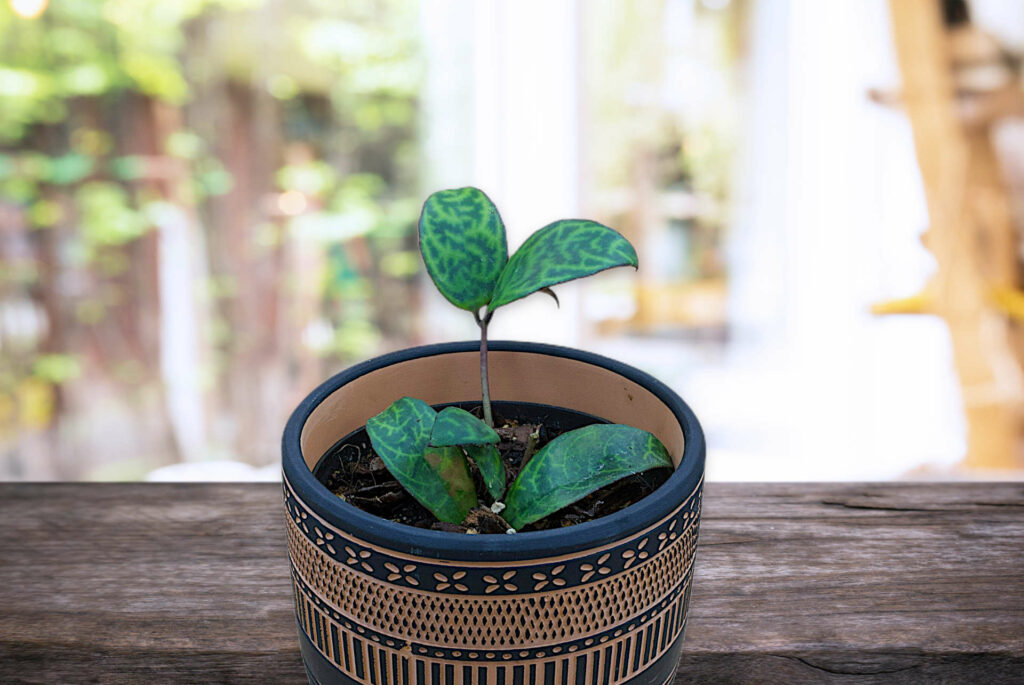
You are less likely to find a Black Pagoda Lipstick Plant in nurseries or garden centers than other Lipstick Plant varieties. However, you can usually source it online or from specialty growers, and it is not particularly expensive compared to other rare plants. That being said, it is still an unusual variety and is prized by many plant enthusiasts because of its stunning foliage and flowers.
When buying a Black Pagoda Lipstick plant, you should look for a few signs of good health and quality. If you are fortunate enough to find a nursery supply, there are a few things to look out for.
First, check the leaves for any signs of damage, discoloration, or pests. The leaves should be glossy and firm, not wilted or yellow. Second, inspect the stems and roots for any signs of rot or disease. The stems should be sturdy and green, not mushy or brown. The roots should be white and healthy, not black or slimy. Third, look for flowers or buds on the plant. The flowers are a sign of maturity and vigor, and they will also add more color and charm to your home.
Even if you purchase online, you should immediately inspect the plant using the criteria above and return it if it doesn't meet the expected standard.
Wrapping Up
Black Pagoda Lipstick Plant is a visually stunning addition to any home or garden and immediately attracts the eye. The plant thrives in humid and shady environments and is relatively easy to grow and propagate, making it a rewarding plant for beginners and experts alike. With proper care, it can bloom regularly, adding a splash of color and contrast to any room. Its distinctive foliage, trailing stems, and easy propagation methods make it an attractive choice for hanging baskets or tall containers.
As with other Lipstick plants, it can be susceptible to pests such as aphids, mealybugs, spider mites, and scale insects, as well as diseases like leaf spot and powdery mildew. Good prevention measures and timely treatment can help maintain its health. Whether obtained from a nursery or purchased online, selecting a healthy plant with glossy leaves, sturdy stems, and vibrant flowers or buds is essential for a successful and rewarding addition to your indoor garden.
Videos
Other Varieties
- Aeschynanthus evrardii Cassiopeia Lipstick Plant
- The Unique Thai Pink Lipstick Plant (Aeschynanthus Thai Pink)
- Mona Lisa Lipstick Plant (Aeschynanthus speciosus): The Complete Guide
- Curly Lipstick Plant: Unraveling the Mystique of The Fascinating Twist
- Aeschynanthus Japhrolepis: The Lipstick Plant with a Shameful Secret
Resources
- Texas A&M University: Black Pagoda Lipstick Plant
Kim is passionate about helping people create beautiful, healthy indoor spaces that are filled with plants. Kim believes that plants make us happier, healthier human beings, and she loves sharing her knowledge with others so they can experience the joys of plant care for themselves. <a href="https://plantcaresimplified.com/kim-marson/">Read more</a>
More Posts